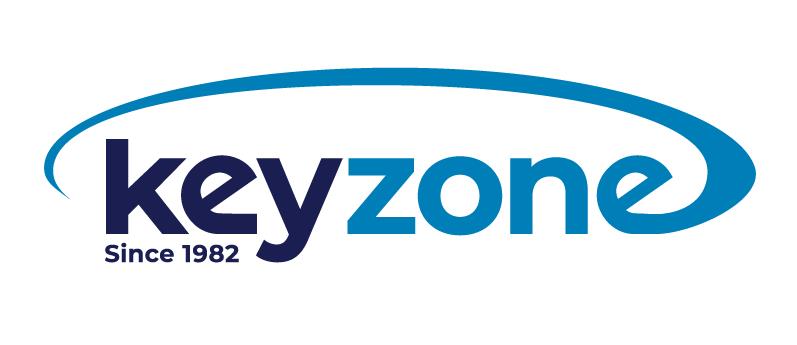We use cookies to make your experience better.
To comply with the new e-Privacy directive, you agree to the privacy policy and our use of cookies.
Intel I350T2V2BLK network card Internal Ethernet 1000 Mbit/s
SKU
I350T2V2BLK
| Connectivity technology | Wired |
|---|---|
| Host interface | PCI Express |
| Interface | Ethernet |
| Maximum data transfer rate | 1000 Mbit/s |
| SKU | I350T2V2BLK |
| EAN | 5032037066105 |
| Manufacturer | Intel |
| Availability | In Stock |
iWARP/RDMA
iWARP delivers converged, low-latency fabric services to data centers through Remote Direct Memory Access (RDMA) over Ethernet. The key iWARP components that deliver low-latency are Kernel Bypass, Direct Data Placement, and Transport Acceleration.
PCI-SIG* SR-IOV Capable
Single-Root I/O Virtualization (SR-IOV) involves natively (directly) sharing a single I/O resource between multiple virtual machines. SR-IOV provides a mechanism by which a Single Root Function (for example a single Ethernet Port) can appear to be multiple separate physical devices.
Intel® Ethernet Power Management
Intel® Ethernet Power Management Technology provides solutions to common power management approaches by reducing idle power, reducing capacity and power as a function of demand, operating at maximum energy efficiency whenever possible, and enabling functionality only when needed.
Flexible Port Partitioning
Flexible Port Partitioning (FPP) technology utilizes industry standard PCI SIG SR-IOV to efficiently divide your physical Ethernet device into multiple virtual devices, providing Quality of Service by ensuring each process is assigned to a Virtual Function and is provided a fair share of the bandwidth.
Virtual Machine Device Queues (VMDq)
Virtual Machine Device Queues (VMDq) is a technology designed to offload some of the switching done in the VMM (Virtual Machine Monitor) to networking hardware specifically designed for this function. VMDq drastically reduces overhead associated with I/O switching in the VMM which greatly improves throughput and overall system performance
iWARP delivers converged, low-latency fabric services to data centers through Remote Direct Memory Access (RDMA) over Ethernet. The key iWARP components that deliver low-latency are Kernel Bypass, Direct Data Placement, and Transport Acceleration.
PCI-SIG* SR-IOV Capable
Single-Root I/O Virtualization (SR-IOV) involves natively (directly) sharing a single I/O resource between multiple virtual machines. SR-IOV provides a mechanism by which a Single Root Function (for example a single Ethernet Port) can appear to be multiple separate physical devices.
Intel® Ethernet Power Management
Intel® Ethernet Power Management Technology provides solutions to common power management approaches by reducing idle power, reducing capacity and power as a function of demand, operating at maximum energy efficiency whenever possible, and enabling functionality only when needed.
Flexible Port Partitioning
Flexible Port Partitioning (FPP) technology utilizes industry standard PCI SIG SR-IOV to efficiently divide your physical Ethernet device into multiple virtual devices, providing Quality of Service by ensuring each process is assigned to a Virtual Function and is provided a fair share of the bandwidth.
Virtual Machine Device Queues (VMDq)
Virtual Machine Device Queues (VMDq) is a technology designed to offload some of the switching done in the VMM (Virtual Machine Monitor) to networking hardware specifically designed for this function. VMDq drastically reduces overhead associated with I/O switching in the VMM which greatly improves throughput and overall system performance
| Ports & interfaces | |
|---|---|
| Internal | Yes |
| PCI version | 2.1 |
| Ethernet LAN (RJ-45) ports | 2 |
| PCI Card form factor | Full-height (low-profile) |
| Interface | Ethernet |
| Host interface | PCI Express |
| Connectivity technology | Wired |
| Bandwidth | |
| Full duplex | Yes |
| Maximum data transfer rate | 1000 Mbit/s |
| Network | |
| Chipset | Intel® I350 |
| Ethernet LAN | Yes |
| Cabling technology | 10/100/1000BaseT(X) |
| Networking standards | IEEE 802.1as, IEEE 802.1Q, IEEE 802.3, IEEE 802.3ab, IEEE 802.3az, IEEE 802.3u, IEEE 802.3x, IEEE 802.3z |
| Supported network protocols | TCP, UDP, IP |
| Maximum operating distance | 100 m |
| LAN controller | Intel® I350 |
| Full duplex | Yes |
| Ethernet LAN data rates | 1000 Mbit/s |
| Maximum data transfer rate | 1000 Mbit/s |
| Technical details | |
| Interface type | PCIe v2.1 (5.0 GT/s) |
| Storage-over-ethernet | Yes |
| Speed & slot width | 5.0 GT/s, x4 Lane |
| PCI-SIG* SR-IOV Capable | Yes |
| PCI Card form factor | Full-height (low-profile) |
| On-chip QoS and Traffic Management | Yes |
| Low halogen options available | No |
| iWARP/RDMA | No |
| Intelligent Offloads | Yes |
| Intel Virtualization Technology for Connectivity (VT-c) | Yes |
| Intel Virtual Machine Device Queues (VMDq) | Yes |
| Intel Flexible Port Partitioning | Yes |
| Intel Ethernet Power Management | Yes |
| Storage Over Ethernet | iSCSI, NFS |
| Harmonized System (HS) code | 8517620090 |
| Export Control Classification Number (ECCN) | 5A991.B.4.A |
| Commodity Classification Automated Tracking System (CCATS) | NA |
| Thermal Design Power (TDP) | 4.4 W |
| Product type | Network Interface Card |
| Processor family | Gigabit Ethernet Adapters (up to 2.5GbE)-Gigabit Ethernet Adapters (up to 2.5GbE) |
| Status | Launched |
| Product brief URL | http://www.intel.com/content/www/us/en/ethernet-controllers/ethernet-i350-server-adapter-brief.html?wapkw=i350 |
| Network interface card type | Server |
| Network interface card cable medium | Copper |
| Market segment | Server |
| Launch date | Q3'14 |
| Last change | 63903513 |
| Design | |
| Chipset | Intel® I350 |
| Internal | Yes |
| PCI Card form factor | Full-height (low-profile) |
| Component for | Server |
| Product family | Intel Gigabit server adapter |
| Product series | Intel® I350 |
| Product codename | Powerville |
| Power | |
| Power consumption (typical) | 5 W |
| System requirements | |
|---|---|
| Compatible operating systems | https://www.intel.com/content/www/us/en/support/articles/000025890/network-and-i-o/ethernet-products.html |
| Operational conditions | |
| Operating temperature (T-T) | 0 - 55 °C |
| Storage temperature (T-T) | -40 - 70 °C |
| Storage relative humidity (H-H) | 35 - 90% |
| Weight & dimensions | |
| Width | 68.9 mm |
| Depth | 135.4 mm |
| Protocols | |
| Supported network protocols | TCP, UDP, IP |
| Performance | |
| Ethernet adapter ARK ID | 84804 |
| Storage-over-ethernet | Yes |
| Speed & slot width | 5.0 GT/s, x4 Lane |
| PCI-SIG* SR-IOV Capable | Yes |
| On-chip QoS and Traffic Management | Yes |
| iWARP/RDMA | No |
| Intelligent Offloads | Yes |
| Intel Virtual Machine Device Queues (VMDq) | Yes |
| Intel Flexible Port Partitioning | Yes |
| Intel Ethernet Power Management | Yes |
| Other features | |
| Chipset | Intel® I350 |
| Compatible operating systems | https://www.intel.com/content/www/us/en/support/articles/000025890/network-and-i-o/ethernet-products.html |
| Thermal Design Power (TDP) | 4.4 W |
| Product type | Network Interface Card |
| Processor family | Gigabit Ethernet Adapters (up to 2.5GbE)-Gigabit Ethernet Adapters (up to 2.5GbE) |
| Ethernet adapter ARK ID | 84804 |
| Interface type | PCIe v2.1 (5.0 GT/s) |
| Cable type | Cat 5 up to 100m |
| Storage-over-ethernet | Yes |
| Speed & slot width | 5.0 GT/s, x4 Lane |
| PCI-SIG* SR-IOV Capable | Yes |
| On-chip QoS and Traffic Management | Yes |
| Low halogen options available | No |
| iWARP/RDMA | No |
| Intelligent Offloads | Yes |
| Intel Virtualization Technology for Connectivity (VT-c) | Yes |
| Intel Virtual Machine Device Queues (VMDq) | Yes |
| Intel Flexible Port Partitioning | Yes |
| Intel Ethernet Power Management | Yes |
| Storage Over Ethernet | iSCSI, NFS |
| Status | Launched |
| Product brief URL | http://www.intel.com/content/www/us/en/ethernet-controllers/ethernet-i350-server-adapter-brief.html?wapkw=i350 |
| Network interface card type | Server |
| Network interface card cable medium | Copper |
| Market segment | Server |
| Launch date | Q3'14 |
| Last change | 63903513 |
| Product family | Intel Gigabit server adapter |
| Product series | Intel® I350 |
| Product codename | Powerville |
| Harmonized System (HS) code | 8517620090 |
| Export Control Classification Number (ECCN) | 5A991.B.4.A |
| Commodity Classification Automated Tracking System (CCATS) | NA |
| Controller type | Intel I350 |
| Cabling type | Cat 5 up to 100m |
| Bracket height | Low-Profile (LP) / Full-Height (FH) |
| Logistics data | |
| Harmonized System (HS) code | 8517620090 |
You may also be interested in
| Product |
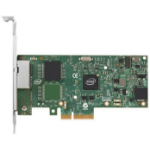
Bestseller
Intel I350T2V2BLK network card Interna...
Login for pricing
|
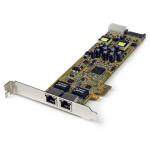
Popular
StarTech.com Dual Port PCI Express Gig...
Login for pricing
|
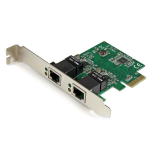
Recommended
StarTech.com Dual Port Gigabit PCI Exp...
Login for pricing
|
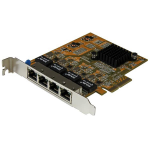 StarTech.com 4-Port PCIe Gigabit Netwo...
Login for pricing
StarTech.com 4-Port PCIe Gigabit Netwo...
Login for pricing
|
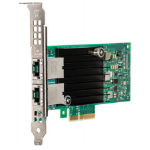
Hot Product
Intel X550T2 network card Internal Eth...
Login for pricing
|
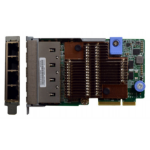 Lenovo X722 Internal Ethernet 1000 Mbi...
Login for pricing
Lenovo X722 Internal Ethernet 1000 Mbi...
Login for pricing
|
|---|---|---|---|---|---|---|
| SKU |
I350T2V2BLK
|
ST2000PEXPSE
|
ST1000SPEXD4
|
ST1000SPEX43
|
X550T2
|
7ZT7A00545
|
| Manufacturer |
Intel
|
StarTech.com
|
StarTech.com
|
StarTech.com
|
Intel
|
Lenovo
|
| Connectivity technology |
Wired
|
Wired
|
Wired
|
Wired
|
Wired
|
Wired
|
| Interface |
Ethernet
|
Ethernet
|
Ethernet
|
Ethernet
|
Ethernet
|
Ethernet
|
| Internal |
Y
|
Y
|
Y
|
Y
|
Y
|
Y
|
| Host interface |
PCI Express
|
PCI Express
|
PCI Express
|
PCI Express
|
PCI Express
|
PCI Express
|
